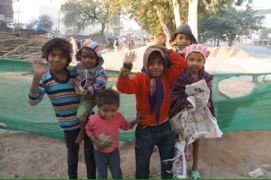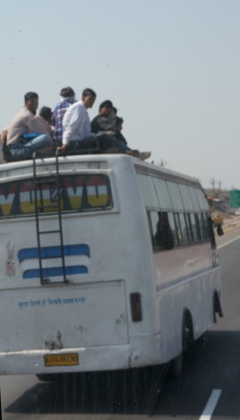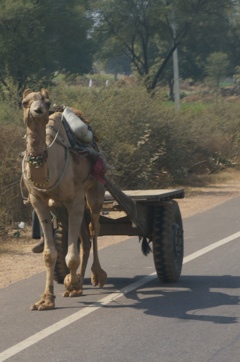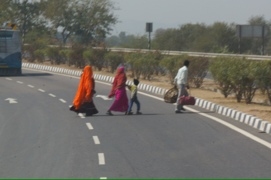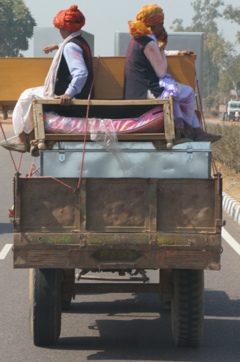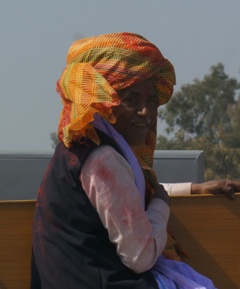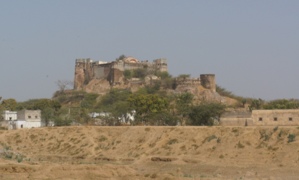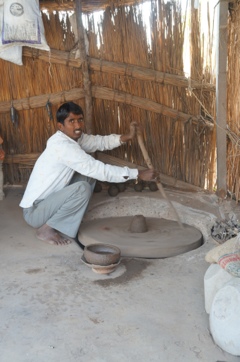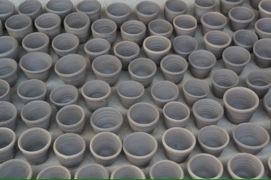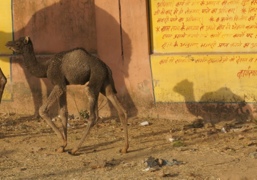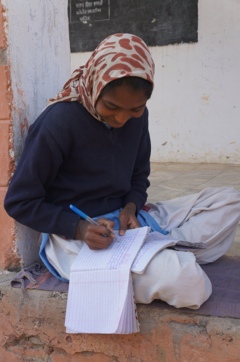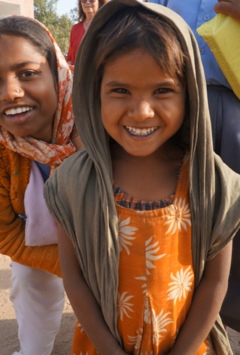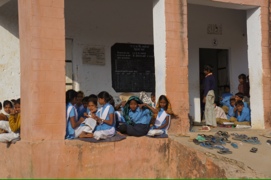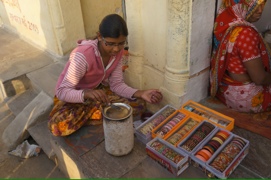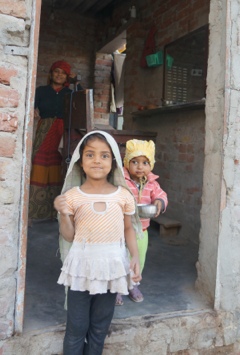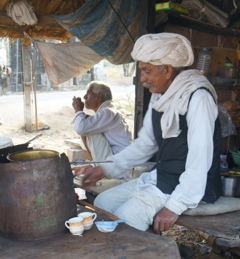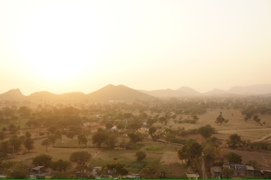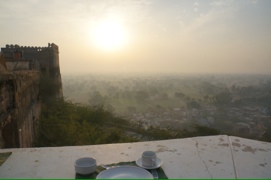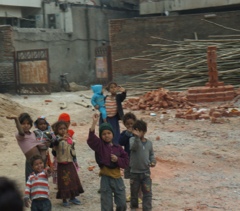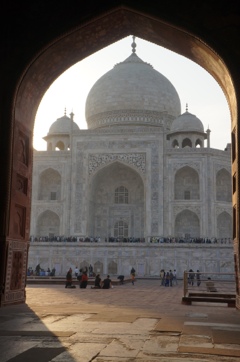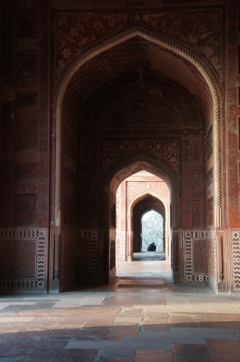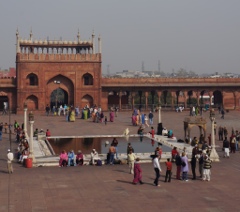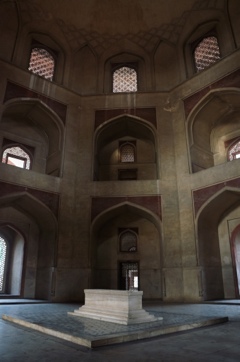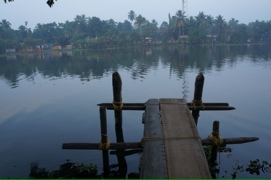Waving goodbye to the kids from the construction site, we hit the main highway, heading for a tiny village in the middle of nowhere, and a fort called Madogarh.
There has been some trepidation about this leg, as we are travelling by public bus and everyone has heard horror stories, but we shouldn’t have worried: it’s a regular intercity bus with comfortable, allocated seats – no need to sit on our packs in the aisles as we might on a local bus.
I notice a girl sitting on a fold-up seat at the very front, next to the driver. She has the best view of all, so when she gets off a little down the road I grab my camera and abandon the comfortable seat for one with a view.
It’s a great way to watch the world go by – we are higher up than most traffic, at eye-level with the trucks, and I end up spending most of the journey just taking pictures of the traffic – rickshaws, camels (we are heading into Rajasthan), and this fellow with the fabulous turban…
Abandoning the bus, we switch to jeeps for an hour or so, driving into the desert past the occasional village, flat cakes of dung drying on the walls to fuel cooking fires. At last we spot a hill in the distance, on which sits a fort straight out of a fairy tale. This is Madogarh, and this is our home for the night – just the twelve of us!
The jeeps take us through the village at the foot of the hill and up the steep track to the fort, past a road crew who are painstakingly covering the track with cobblestones. Two tall turbaned men wait to greet us with red powder to mark our foreheads. Each room is different, built into the walls of the fort. Mine is just behind the battlements, which can be reached up three stone steps to provide sweeping views of the countryside.
There is time in the afternoon for a walk through the village with the manager of the fort, a tall man in a military beret, with a magnificent moustache, who turns out to be a bit of a dancer later in the evening.
We are followed by a trail of local kids most of the way, past the local potter, weavers making a rug at a huge loom, craftworkers attaching sequins to sari fabric, and a detour into the local school to deliver those boxes of pencils (wishing we had something a little more exciting to give), which causes immediate suspension of classes as the kids crowd around for “one photo!”.
We visit a workshop where women are polishing small beads and making necklaces, and another small shop where a whole family is at work melting and shaping resin to make colourful bangles, the daughter painstakingly sticking diamantes into the soft edges.
There is time for chai, where we are served the throwaway clay cups which we saw the potter making earlier. It definitely adds another dimension to the taste.
Back at the fort, there is beer on the turret “bar”, then we have a surprise in store: a local woman has come up from the village to dress all of the women in traditional dress, while the men learn the finer arts of rolling a turban. The finished result has us in stitches, but we definitely look the part as we descend to the courtyard, where dinner is served by firelight, and local musicians play the sitar and harmonium into the night.
I am up with the sparrows the next morning, taking my camera to the rooftop to watch the dawn. In the main village temple I can see flickering lamps, and the sound of the bells and drums signifying morning prayer wafts up the hill. I can see little lights across the plains below until, abruptly, the power goes out and all is dark.
With sunrise come the birds, and there is a hilarious pantomime played out on a rooftop below as a peacock does his best to display his colours to an uninterested peahen. He turns away to show his feathers to greater effect, and she takes her chance and jumps. He looks distinctly confused when he finally turns around to an empty rooftop.
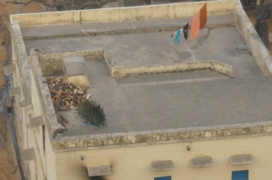 Checking out her escape options
Checking out her escape options
Breakfast is served on a turret, with the most amazing breakfast view so far.
It’s Valentine’s Day, and in the tiny gift shop a local painter is offering special deals on miniature portraits of Krishna with his favourite girlfriend, Radhe (he had 16,000 to choose from, apparently, but she was definitely number one).
It strikes me that this place would be the perfect writers’ retreat. No internet or TV to distract (in fact, nothing to distract but the view), and peace and quiet in abundance. A wander down the hill to the chaiwallah now and again to break the day… It definitely could be worse!
